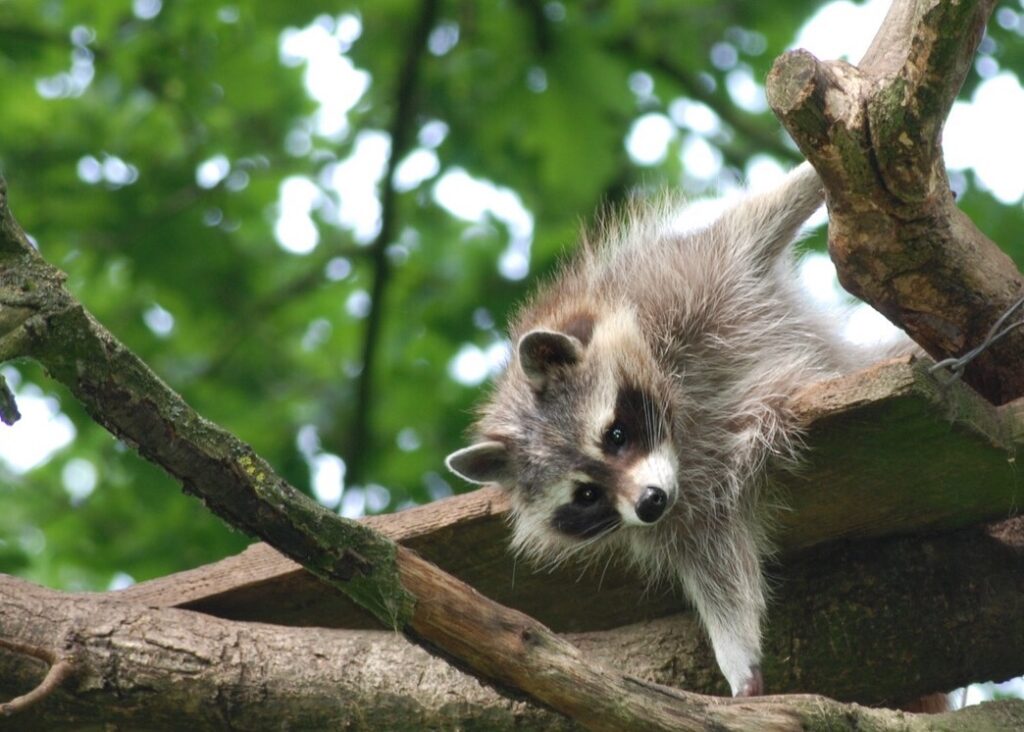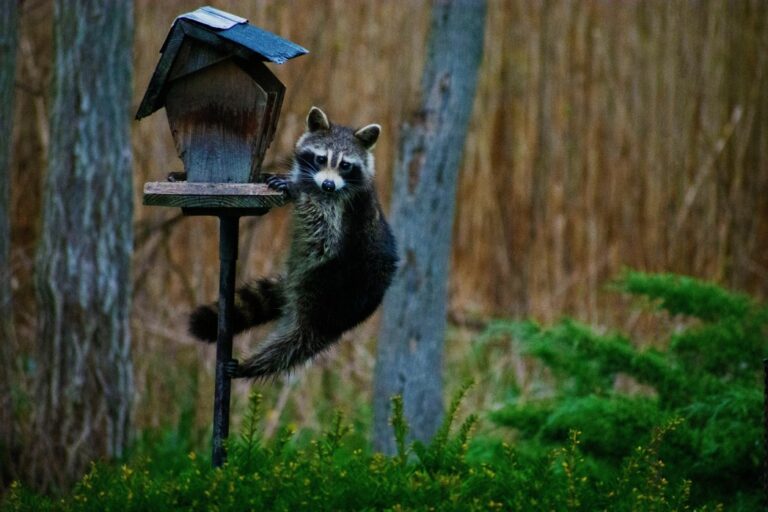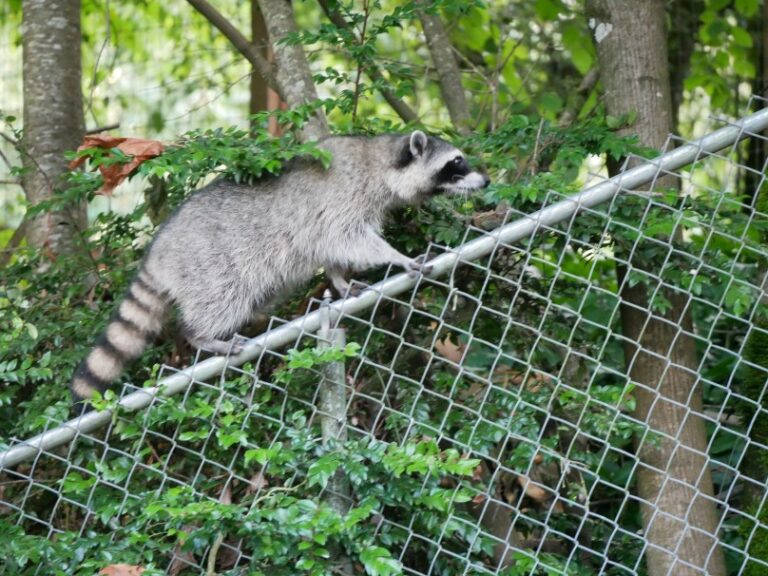
December 18, 2021
Are Raccoons Considered Good Jumpers?
Raccoons are resourceful and persistent animals. They can invade your yard and garden, and destroy the crops you have worked hard for. These animals are considered skilled jumpers, climbers, swimmers, and runners. That’s why catching them can be a bit tricky for home owners.
It’s not uncommon to see a raccoon in your attic, fence, tree, or rooftop. While they aren’t built for jumping, they can reach a height of 4 feet. Now, you may not think of this as a big deal. But, considering that nothing about their shapes suggests that they can jump at all, this is quite remarkable.
Note that raccoons aren’t built for leaping or jumping. That’s because their body is heavy, and they don’t have super strong leg muscles. But they can still jump as high as feline animals do. Experts say that it’s easy for these animals to jump down from heights and horizontally. However, they can still scale to the top of most houses and fences.
How High Can Raccoons Jump Up Vertically?
Well, jumping upwards is not their thing. So when it comes to vertical jumping, raccoons usually don’t jump that high. Bear in mind that raccoons have stubbly little legs and are thick naturally. Combining these factors doesn’t allow them to jump a very high distance vertically. The highest they can go is 4 feet.
The bodies of raccoons are not designed for jumping. However, these animals adapt to their surroundings to survive. Therefore, if you see one on your rooftop, it probably didn’t jump straight up. High chances are that the animal leaped over something to get to the top. Generally, raccoons are said to be better at jumping off things instead of over them.

However, note that while their vertical jump is limited to 4 feet high, it doesn’t mean that they cannot jump to places as high as 40 feet and land safely without any injuries. This ability is mostly due to the fact the raccoons have stubby limbs. Their shorter forelimbs and longer hind limbs give them an arched shape when running.
Also, note that they are sluggish animals. Most of the time, these animals will gain weight when the summer is approaching. As such, it prevents them from jumping high.
Now, you might wonder why squirrels also have shorter limbs but jump higher compared to raccoons. That’s because naturally, raccoons do not have many predators. Therefore, they don’t have a good reason for jumping fast or high.
The same thing also applies when it comes to hunting prey. These animals rarely run after prey. Rather, they hunt for them while then they’re in their nest as they know they can’t abandon the nest.
How Far Can Raccoons Jump Horizontally?
This is where raccoons excel. Thanks to their elongated hind legs that allow them to extend their body length and leap forward quite quickly, these animals can jump to far distances.
Raccoons can jump up to 5 feet far when jumping from the ground and up to 10 feet when jumping from a height. That’s why they can easily move from one tree to another or one building to the next.
But note that they can’t go beyond that distance because of their paws. If they do, they risk being injured.

Can A Raccoon Jump Down?
Yes, a raccoon can jump from a great height downwards. They can even fall off on people or animals and hit or bite them. The impressive thing about their jumping or falling off a height is that they are not injured in the process.
That’s because their fur, although not that dense, offers some protection from injury. However, this doesn’t mean that they can’t be injured when they jump or fall from heights.
Raccoons can get injuries if they fall or jump off on hard surfaces or a wrong attempt. Again, remember that raccoons are generally heavier compared to cats. They weigh approximately 13-20 pounds. Heavier animals are more likely to get injured when they jump from a height than lighter animals. Therefore, raccoons can fall badly when compared to cats.
But, note that these animals are very intelligent. Plus, they are also good landers. Thus, when they jump or fall off from great heights, they know how to position their feet for a safe landing. Just like cats, they extend their legs when falling and turn in front of their feet but remain in the air.
In simpler terms, a raccoon will frontflip or backflip to turn to their front legs so that they land on their feet. They do this by first twisting the front legs. Then, they extend the front legs to a maximum length and then close to the ground.
When landing, these animals land on their paws first, then their legs. This reduces the risks of getting injured and makes the landing safe. Also, they use this trick to prevent them from falling on their back.
If you think you have signs of raccoons on your property, call us for a free phone consultation or an appointment.
Westchester Wildlife provides humane and effective trapping and removal services for raccoons from your home or business in Fairfield County CT, or Westchester, Putnam, and Dutchess Counties NY. We are a trusted wildlife removal company dedicated to helping you with all your wildlife infestation problems, no matter how big or small.
